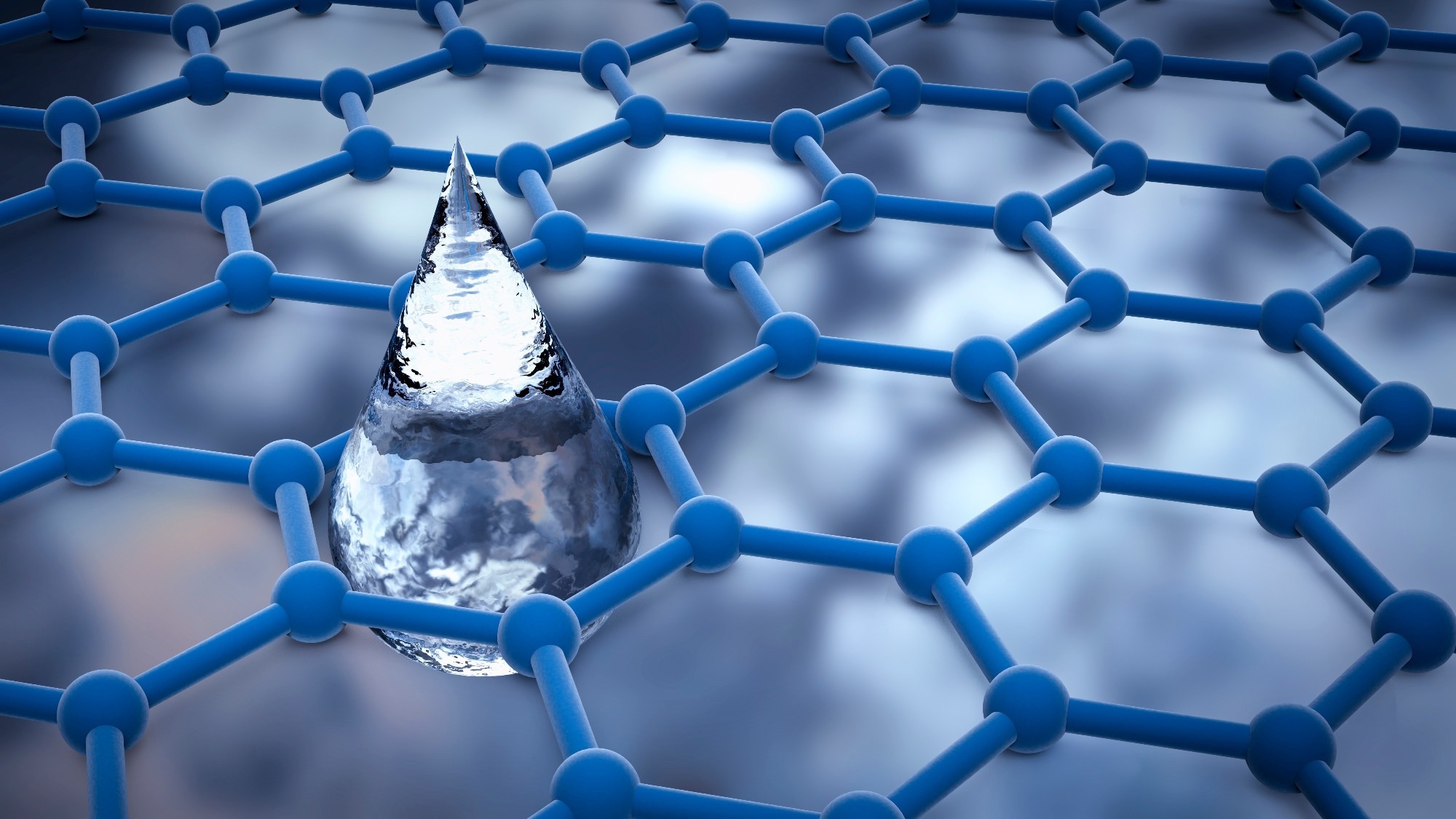In a recent review article published in Membranes, researchers from the United States of America and Korea presented a comprehensive overview of the progress made of carbon-based nanocomposite membranes for membrane distillation, discussed the remaining challenges, and outlined future research directions.

Image Credit: Kateryna Kon/Shutterstock.com
Background
Membrane distillation (MD) is an emerging separation technology utilizing hydrophobic membranes to separate vapor from liquid, making it effective for desalination and wastewater treatment. The efficiency of MD is significantly influenced by the properties of the membranes used. The principle relies on the vapor pressure difference across a hydrophobic membrane, allowing water vapor to pass through while rejecting liquid water and dissolved salts.
Traditional membranes often face issues such as wetting, fouling, and limited thermal stability, which can hinder their performance. Recent advancements in nanotechnology have led to the development of carbon-based nanocomposite membranes, which promise enhanced performance due to their unique structural and functional characteristics.
Carbon-based materials, including carbon nanotubes (CNTs) and graphene, have gained attention due to their exceptional mechanical strength, thermal conductivity, and hydrophobic properties. These materials can be incorporated into membrane matrices to create nanocomposite membranes that exhibit improved separation efficiency and resistance to fouling.
Studies Highlighted in This Review
The review discusses several key studies that have contributed to the understanding and development of carbon-based nanocomposite membranes for MD. One notable study by Sun et al. focused on the design of a stainless-steel substrate with a controllable structure, which included sponge-like regions and micro-voids. This substrate facilitated the in-situ growth of CNTs using a chemical vapor deposition (CVD) process.
When tested with simulated seawater, the CNT network membrane demonstrated a high salt rejection rate of over 99 % and a water flux of 43.2 liters per square meter per hour (LMH). However, a slight decrease in flux was observed after prolonged operation due to membrane corrosion.
Another significant contribution was made by Dong et al., who investigated two types of CNT-incorporated membranes: partially covered (PC-CNT) and fully covered (FC-CNT). Their findings revealed that the FC-CNT membrane maintained a flux of 37.1 LMH and showed a salt rejection of 99.9 %. On the other hand, the PC-CNT membrane showed a higher water flux of 41.1 LMH but lower salt rejection and was more prone to wetting.
The review also highlights the work of Huang et al., who developed a simple coating method to create superhydrophobic layers on ceramic alumina membranes for vacuum membrane distillation. Their approach improved the membranes' resistance to wetting and fouling, thereby enhancing overall performance.
Discussion
The results from the studies discussed in the review indicate that carbon-based nanocomposite membranes can significantly improve the performance of MD systems. The incorporation of CNTs and graphene into membrane matrices not only enhances mechanical strength but also promotes better thermal conductivity and hydrophobicity. These properties contribute to higher water vapor flux and improved salt rejection rates.
The review emphasizes the importance of optimizing membrane fabrication techniques to achieve the desired structural characteristics. For instance, the phase inversion method has been shown to effectively incorporate carbon nanomaterials into polymer membranes, resulting in enhanced porosity and pore size.
The review also discusses the role of surface modification in improving membrane performance. By creating superhydrophobic surfaces, researchers have been able to reduce liquid-solid contact, thereby minimizing fouling and wetting.
Despite the promising results, the review identifies several challenges that must be addressed. One major issue is the stability of carbon-based nanocomposite membranes under operational conditions. Prolonged exposure to harsh environments can lead to degradation and loss of performance.
Additionally, the immobilization of CNTs on membrane surfaces remains challenging, as they can be washed away during operation. The review calls for further research to develop more robust membrane structures that can withstand operational stresses.
Another challenge highlighted in the review is the need for a better understanding of the transport mechanisms involved in MD. While the Cassie-Baxter model and Knudsen diffusion have been proposed to explain water vapor transport through superhydrophobic membranes, more research is needed to elucidate the underlying mechanisms and optimize membrane design accordingly.
Conclusion
Future research should focus on developing innovative fabrication techniques, optimizing membrane structures, and gaining a deeper understanding of the transport phenomena in MD systems. By overcoming these challenges, carbon-based nanocomposite membranes could play a crucial role in addressing global water scarcity and improving wastewater treatment processes.
The review serves as a valuable resource for researchers and practitioners in the field, providing insights into the current state of research and future directions for the development of efficient and sustainable membrane technologies.
Journal Reference
Regmi C., et al. (2024). Carbon-Based Nanocomposite Membranes for Membrane Distillation: Progress, Problems and Future Prospects. Membranes. DOI: 10.3390/membranes1407016